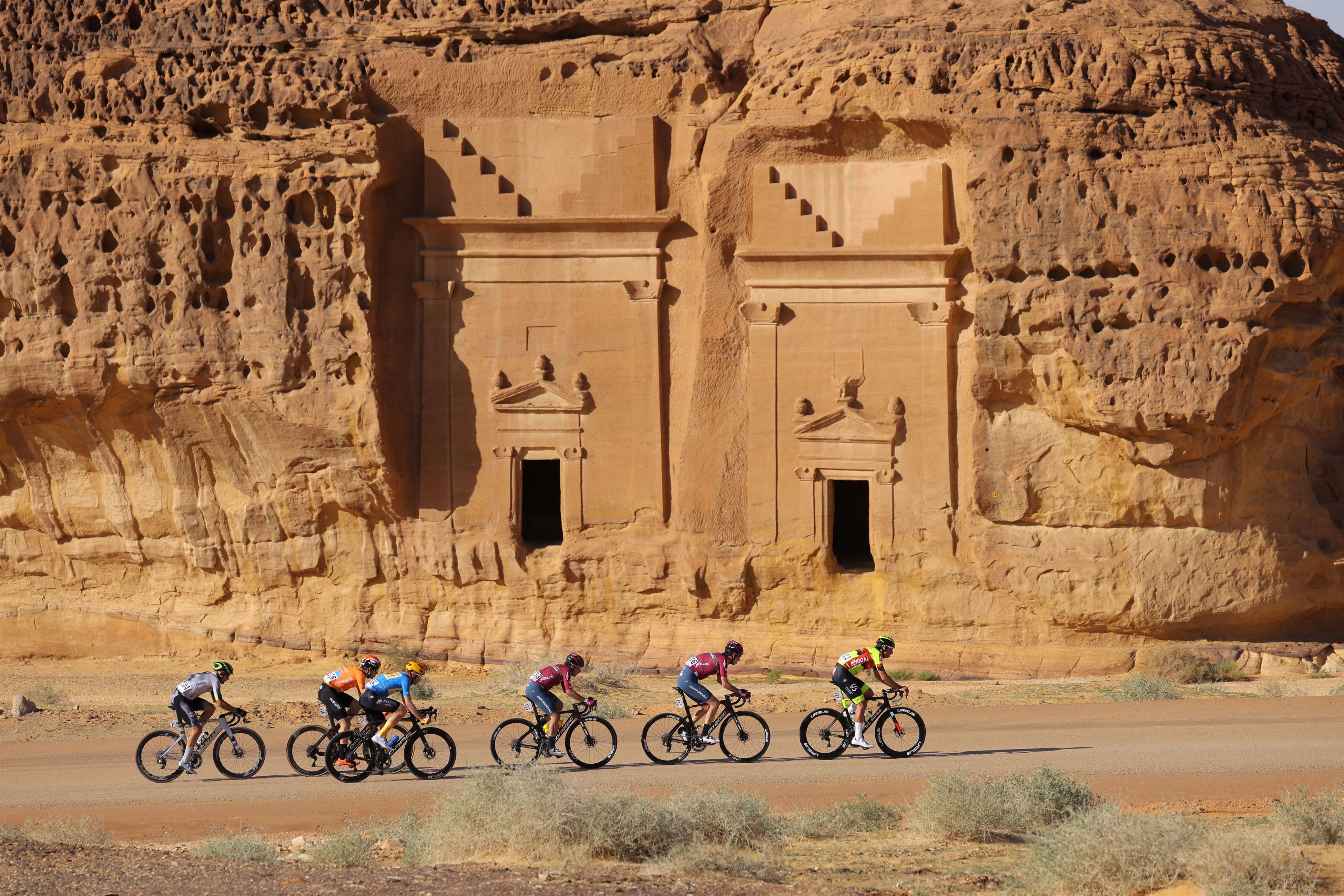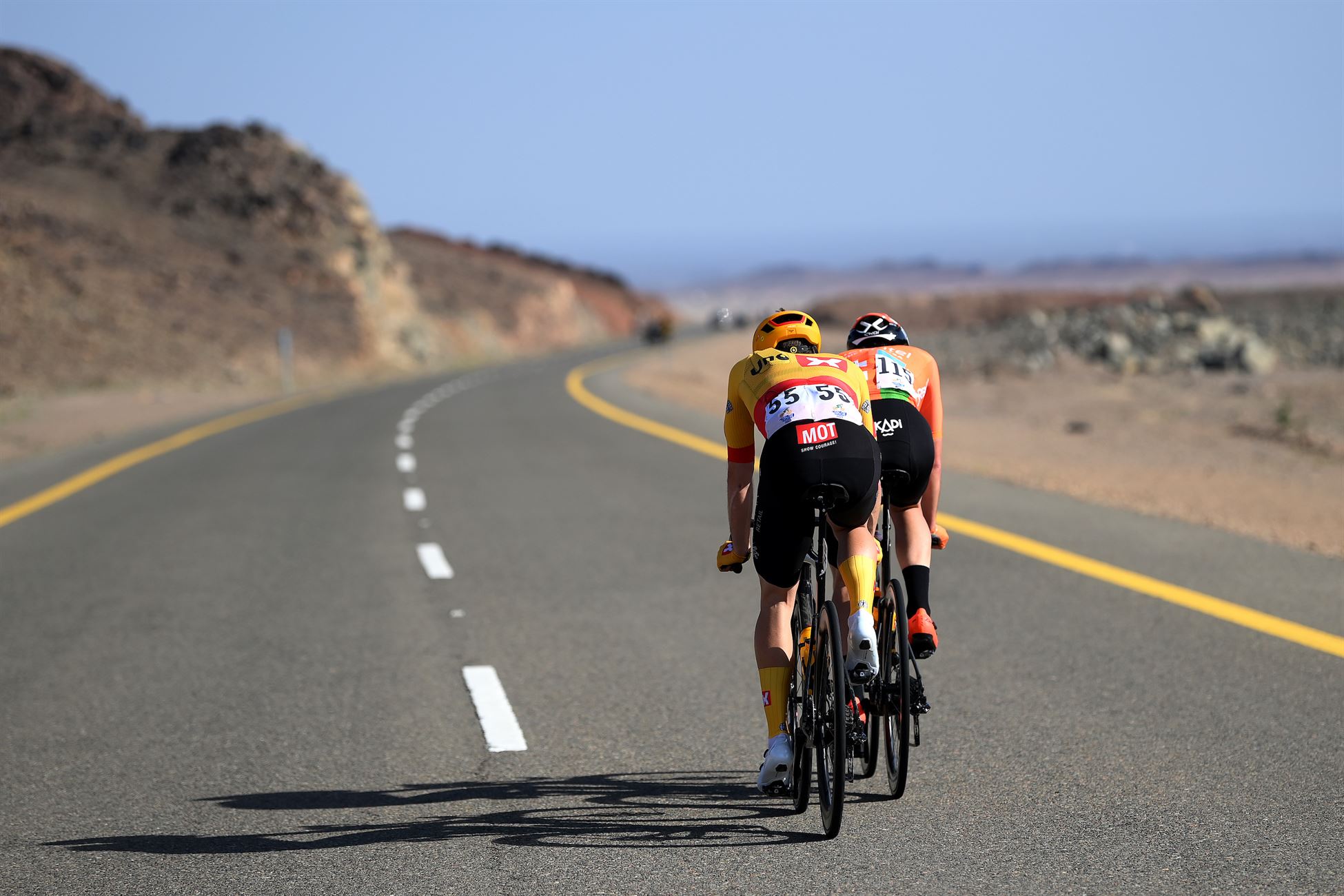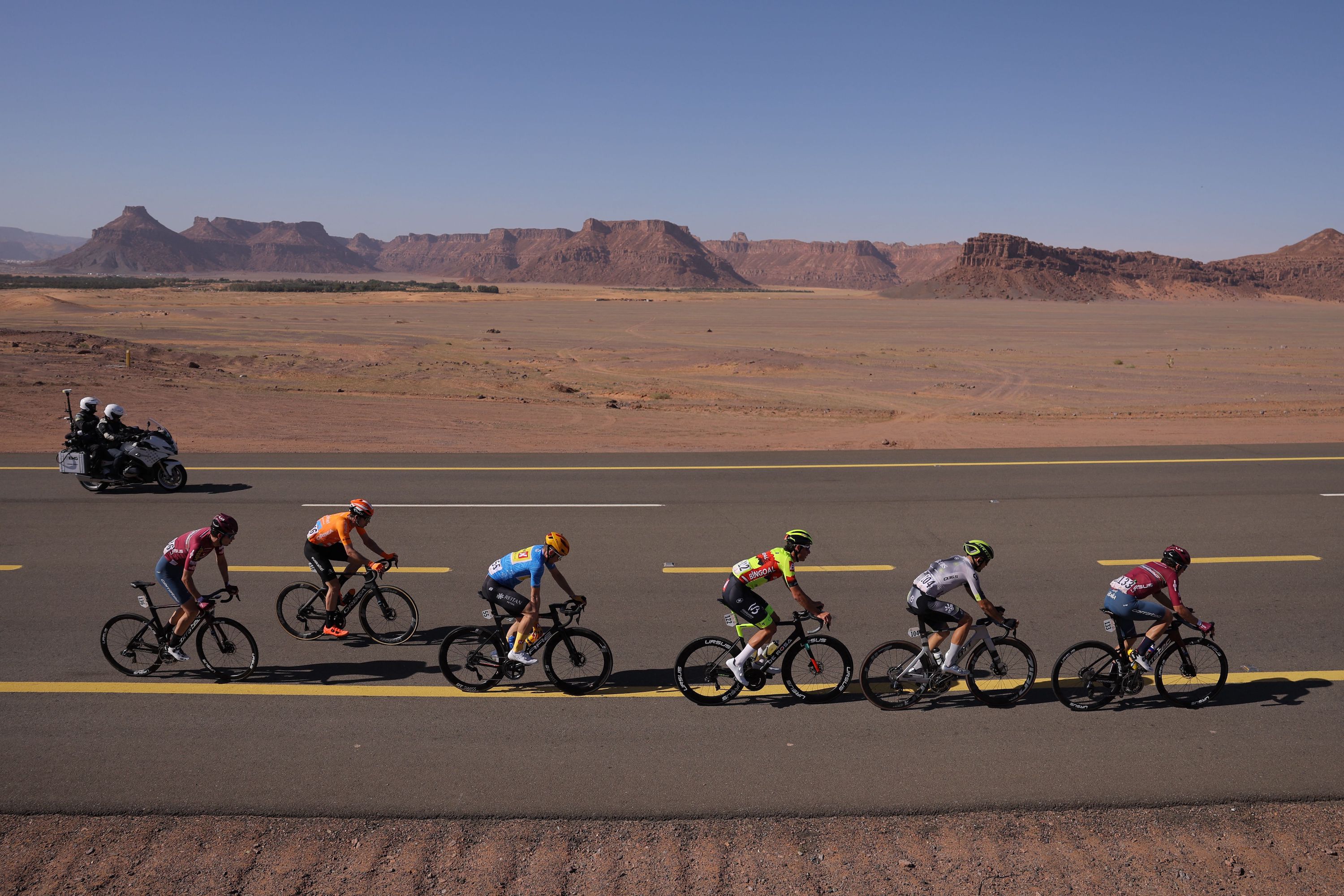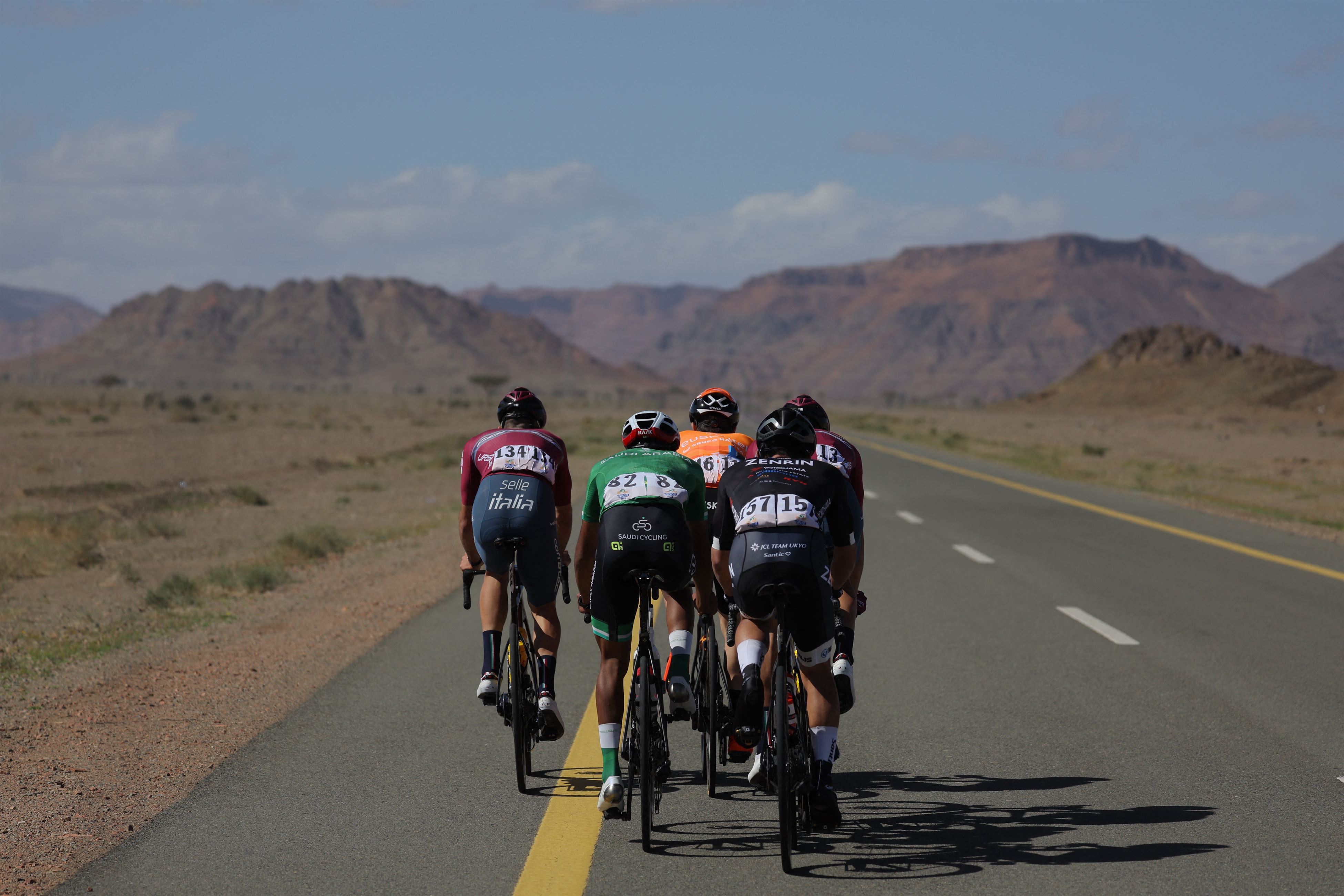
In 1945, Wilfred Thesiger set off on an epic adventure, crossing the 'Empty Quarter' of Saudi Arabia, one of the first Europeans to do so, with the help of Bedouin locals.
In his seminal 1959 book, Arabian Sands, the British explorer writes of what is now Saudi Arabia: "There is no rhythm of the seasons, no rise and fall of sap, but empty wastes where only the changing temperature marks the passage of the year. It is a bitter, desiccated land which knows nothing of gentleness or ease."
Despite nominally being the 'Empty Quarter', this region was never truly empty, as no space truly is, something Thesiger notes in his introduction: "Men have lived there since earliest times... Men live there because it is the world into which they were born."
The explorer tells us: "No man can live this life and emerge unchanged. He will carry, however fait, the imprint of the desert."
In late January and early February, the riders of the Saudi Tour were left with the imprint of the desert, as they spent five days in the Saudi Arabian desert. Blasted with sand, assaulted by the wind, and scorched by the sun, the peloton will certainly remember their time in the "desiccated land".
It is not an experience unique to the Saudi Tour, the riders of the Tour of Oman and the currently-ongoing UAE Tour would also attest to the brutality of the landscape they have been through, about as far from the familiarities of northern Europe as is possible.
Those who experience the oddity and difference of this world more than anyone else are the riders of the break. As the peloton can band together in these new, wild, uninhabited lands, the break are a small band of adventurers doing something different.
What makes these moves even more fascinating is the doomed nature of them, as this is not terrain suited to the baroudeur or the escape artist, but instead mass bunch sprints. There is nowhere to hide in the desert.

Marcus Sander Hansen of Uno-X spent more time up the road than any other rider across the five days of the Saudi Tour. For the man from Denmark, it made a very odd setting for his return to racing after his 2022 season ended suddenly in August.
"I felt a bit alone out there, but it was really nice," the 22-year-old told Cycling Weekly after stage one. "Last year my season ended quite abruptly, so I'm just happy to be back and in good shape. I crashed and had a knee injury for like two months. My season was over, so I'm super happy to get this experience. "I was a little bit nervous, but I was just trying to enjoy my day."
Sander Hansen was actually left hanging off the front on his own after his break companions abandoned him; a situation which left him confused.
"Right then, I didn't know what to do actually, because we had a sprinter back, so I was wondering if it was a stupid effort," he explained. "I thought it was nice just to get some television time, and just go for it. I held on quite well, and in the end I was just tired. It was very nice. A lot of guys tagged me in stories, and I've had a lot of congratulations. Everyone knows how hard it was last year, I had a concussion too."
Some might find this solo effort boring, but not Sander Hansen: "Yesterday I really enjoyed being in my own pain, it was nice to have time for my own thoughts."

Compared to the Dane, for Azzam Alabdulmunim of the Saudi Arabia team, this was basically as close to home as he can race at this level.
The 19-year-old was in the break on stage three, and was seen barely hanging on to the move, the biggest challenge of his nascent career to date. While he had support from some of those in the escape, for others he was an unneeded encumbrance.
"It was really tough. But it was a good chance to compare my level and my performance to the global professional cyclists, on flat roads. Also, it was an amazing feeling. All the people, my team and colleagues, were focusing on me, and supporting and motivating me.
"I was trying to work as a team with them, and when I felt tired I went to the back. Not all of them were helping."
What makes riding in a break at a race like the Saudi Tour dispiriting is the knowledge that you are not in control, that the peloton could pull you back in at any moment, like a cat hovering its paw above a mouse's tail.
Nickolas Zukowsky of Q36.5 admitted to being "bored" during his time up the road on stage four, when he was the last man standing.
"For sure, being only four of us, it was a long day," he told Cycling Weekly. "It's also hard when you don't get that big of a leash, so that's pretty demoralising. At the end of the day, you just try and ride an easy-ish tempo, because the peloton are the ones that dictate the gap anyway. You just try and make it harder for them at the end. It was nice to show our jersey at the end.
"When it's so few riders, there's not much else to do than ride at an easy enough pace so you have enough in the tank to try and push the gap in the final. But with the wind, the peloton has such a big advantage. They eat up so much time on us easily.
"We get to look around, it's a pretty crazy place to see, to be honest. Especially yesterday, with the start. We try to not get too bored. You just think of other things to do, fueling, saving energy. It's only two hours, and it goes by fairly quickly."

All of these riders appeared marked by their desert experience, mostly through the boredom and the inevitability of their failure. However, no one spent more time out of the peloton than Sander Hansen, who ended up with the blue jersey for the intermediate sprints competition.
Speaking following the final stage, the Dane said: "I've been testing myself a lot, and I'm quite surprised that I've managed to keep lasting so long in the break.
"I'm at home," he joked. "A desert breakaway can't go to the finish, because there is not much difference in the terrain. But it's nice to be out there."
The modern day explorers are fortunate enough to have ready access to water from their team cars and the end in sight, not luxuries allowed to Thesiger eighty years ago. Still, their time out gained them a modicum of respect, and some understanding of the power of the desert. Fortunately, they all survived.

